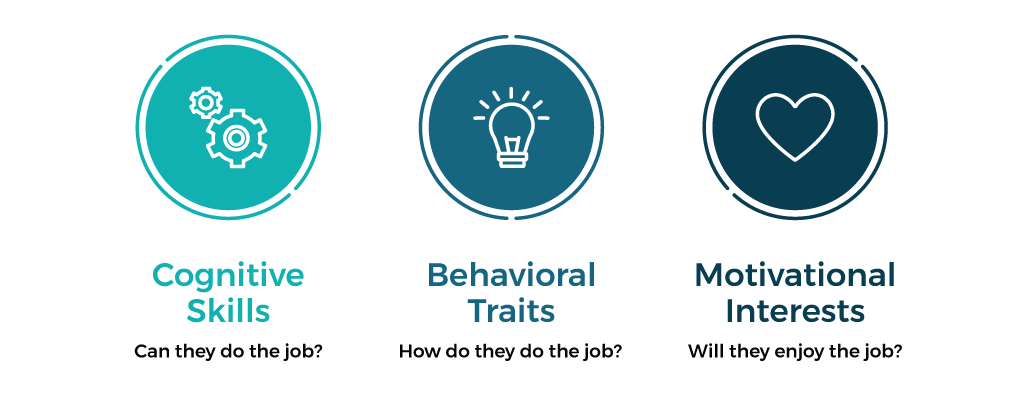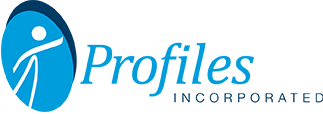Posted by on February 14, 2020.
Thousands of years ago, our ancestors discovered an innovation that changed the course of history—fire. Not only did fire allow people to cook their food (rendering asparagus slightly more palatable), it enabled humans to dispel the darkness and identify threats lurking in the shadows. Fire led to security. And from a place of security, humanity thrived.
Although humans no longer rely solely on open flame to light the night, we still deeply rely on our ability to illuminate the unknown. This ability allows us to collect the information we need to make informed decisions that lead to success, especially in the business world. Now more than ever, we need the illuminating power of talent management assessments to guide the way towards informed decisions.
Why?
Of course, resumes, interviews, and recommendations provide a solid starting point for gaining a basic sense of who a person is. But talent management assessments go a few steps further to collect additional information that organizations can use to better predict whether an individual will find success in a position and perform to their full potential. To select the right person for a specific role and nurture them for continued success, you need to cast even more light on the right information—information that might otherwise remain hidden in the shadows if your organization relied solely on resumes and recommendations.
That’s where talent assessments shine.
What Does the Right Information Look Like?
The torch of the talent management assessment shines a light on three key areas of an individual. Assessments measure how people think, how they work, and what motivates them. They illuminate the information that allows organizations to make smart talent decisions by considering three aspects of the individual:

Of course, some assessments measure each of these aspects individually. Other assessments, like PXT Select™, measure all three. Each assessment differs in its application, and an organization may choose to test different aspects of an individual depending on its business needs and objectives.
Here’s what each type of assessment measures:
- Cognitive Assessments
These assessments measure an individual’s ability for memory, concentration, problem-solving, and other mental capabilities required to excel in specific jobs. When paired with data from behavioral assessments, results from cognitive assessments significantly increase an organization’s ability to predict an individual’s ability to perform their job successfully.
A cognitive assessment could tell an organization, for example, that a certain individual engages more with their work when allowed to perform intricate calculations and communicate complex data to others. With this in mind, an organization can maximize the individual’s talents by allowing them to analyze numerical data at a more advanced level than their position requires. The organization can also make sure it’s setting the individual up with assignments that challenge and engage them. Everyone’s needs differ. Knowing how those needs vary can make all the difference in keeping a diverse group of employees satisfied in their roles.
- Behavioral Assessments
As you might’ve guessed, these assessments provide an accurate insight into people’s behaviors. They also assess the needs and core drivers of an individual. Behavioral data can help predict how someone will behave in a specific work situation or how they might work under a certain manager or team. Using this data can also help organizations discern how to coach, manage, and develop individual employees to achieve their optimal levels of performance.
A behavioral assessment, for example, might detect an individual’s tendency to act assertively. An assertive individual like this might feel more need for control, be more competitive, and be more achievement-oriented compared to their coworkers. With this insight in mind, an organization can put that individual on a team that desperately needs someone with the willingness to move and shake things up a bit. At the same time, the organization could use that information to avoid creating a team with too many assertive or forceful personalities. In this way, organizations can utilize behavioral information to resolve possible challenges before problems occur. It’s a proactive approach towards creating successful teams.
- Motivational Interests Assessments
Having the right behavioral traits or cognitive abilities to do a job can lead to success. But having the right motivational interests for doing a job allows an individual to excel and engage even further. The more interested an employee is in the work they do, the more likely they are to engage with their work and persist when challenges arise.
A motivational interests assessment might help a publishing firm, for instance, learn that an individual applying for a writer position named Therese enjoys imaginative and artistic activities and the opportunity to collaborate with others. Having established their image of the ideal writer already, the publishing firm can offer Therese the job knowing that she has the right interests and motivation to engage fully with her work as a writer.
Lighting the Way Toward Future Success
Our innate need to illuminate the darkness—that same need that drove humans to light fires and torches so long ago—still serves us in the modern world. By using data-driven talent assessments like PXT Select to gather and evaluate information about candidates and employees that would otherwise remain hidden, organizations can discover what they need to know in order to engage individuals, set employees up for success, and enter into a brighter future.
For more information on how PXT Select can illuminate the ambiguity in the talent selection process and provide direction in your organization, click here.
